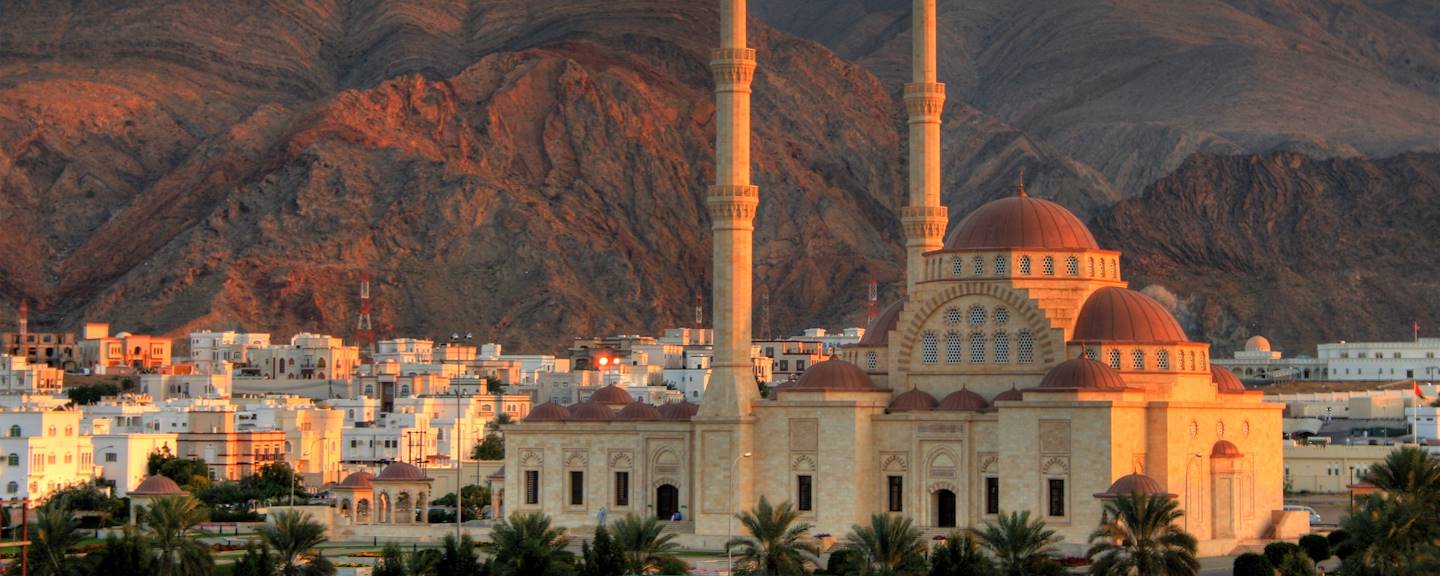
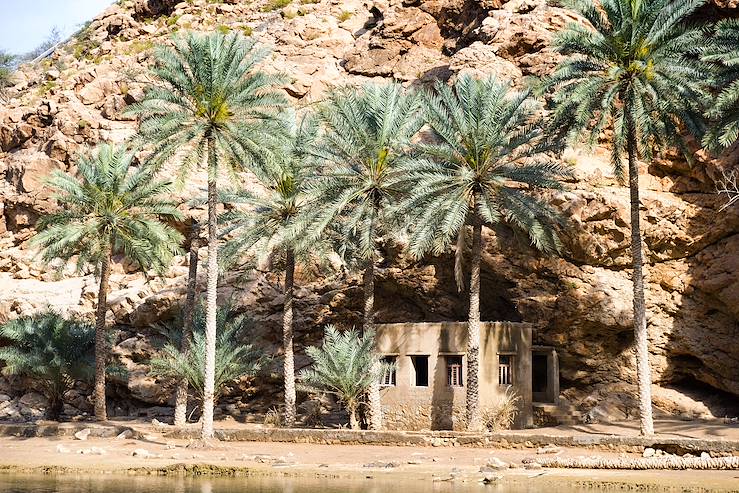
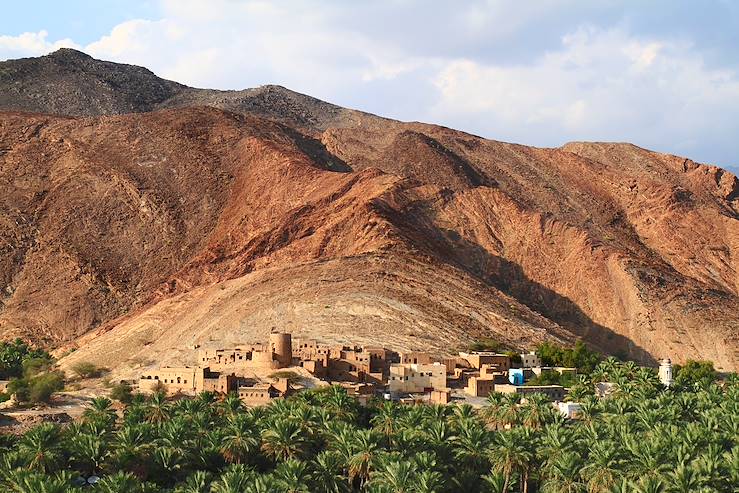
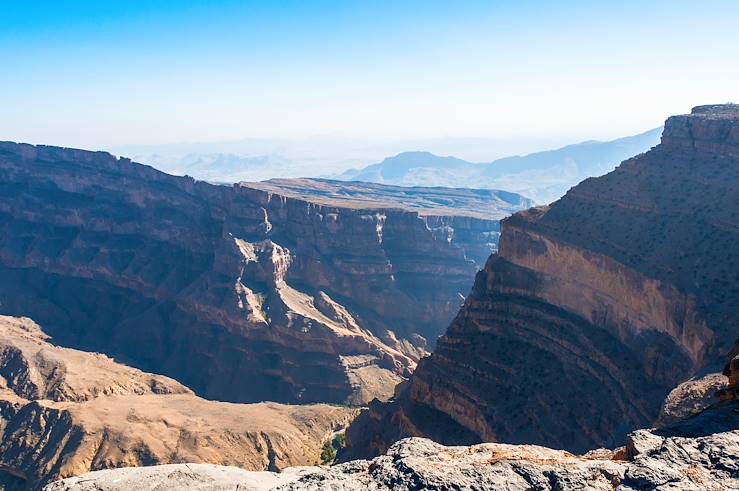

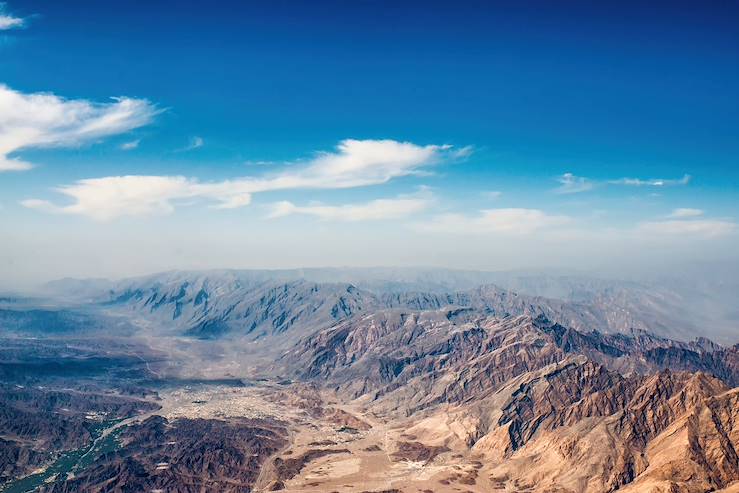
Inspiration for your own tailor-made trip
Oman - Muscat - Sharqiya Sands - Jebel Shams - Al Hamra
100% customisable for you
Fly to the sultanate in the evening and arrive the next morning. There will be a personalised welcome, priority customs clearance and private transfer to your hotel nestled at the foot of the mountains, bordering the clear waters of the Gulf of Oman. Enjoy a three-night stay in this idyllic setting; the perfect base camp for exploring the area.
Spend the next couple of days exploring Muscat, either independently or with a local guide. Consider starting with the two most important sites: the Sultan Qaboos Grand Mosque (1995-2001) and the Royal Opera House Muscat (2007-2011), both emblematic of contemporary Islamic architecture. Continue on to the Bait Al-Zubair Museum, which features a valuable collection of ancient art and handicrafts. Finish in the shopping district of Muttrah, where the souq was once one of the most active on the Arabian peninsula and participated in trade with China and India. There are no longer dry mud walls or palm roofs, but Al Dhalam (the Darkness) has retained its shady, popular and busy atmosphere. The souq is the place to find dates, mother-of-pearl handicrafts, traditional clothing, 'khanjars' (the curved-blade dagger that makes a man an Omani), 'bakhoors', which perfume the house and keep the 'jinn' (evil spirits) away.
Sur is a historic city located in the north-east of the sultanate, on the shores of the Gulf of Oman. In ancient times, this city was a port of call for sailors and pirates heading for Africa. Situated between a lagoon and the mountainous foothills of the Hajar mountains, Sur is renowned for its harbour and shipyards. Not far away is the charming village of Al-Ayga, the birthplace of the famous traditional dhows. The stretch of coastline, dotted with fishing villages and magnificent beaches, is quite spectacular. Make sure to visit the mausoleum of Bibi Maryam in the Persian village of Qahlat.
Today, drive into the desert to spend a night in the middle of the sand dunes, staying in a tented camp in the shade of the rare ghaf trees (flowering evergreen trees). Although this is an authentic experience under the canvas, there are plenty modern conveniences to ensure you'll be comfortable. The tents are reminiscent of authentic Bedouin life, with the continual presence of the desert and the gigantic scale of the sky. Thankfully there's a swimming pool available to guests, which offers a welcome respite in this arid environment. Even the taste buds are tantalised on this trip, as you'll enjoy delicious, authentic meals. Explore the camp’s surrounding either on horseback, on an Arabian camel, in an all-terrain vehicle or on foot. Discover the Bedouin way of life by enjoying sandboarding, volleyball and billiards; or visit the gazelle and oryx enclosures.
Drive to Al Hamra, where some of the sultanate's oldest buildings can be seen. In the souq, those with a sweet tooth can see how halva, the delicious oriental treat made of sesame, is created. The surrounding landscape is made up of the central part of the Hajar mountains, with views of Jebel Akhdar – also known as the Green Mountain – and hundreds of wadis. There is staunch authenticity everywhere, with spectacular scenery, small villages, old forts, orchards and terraced crops. Included in the itinerary is a visit to Misfat Al Abriyeen, a pretty village in Hajar surrounded by a huge palm grove hanging on the side of a canyon. The village presents a fine example of 'falaj', an ingenious irrigation system based on small furrows dug into the ground, into which water flows, from groundwater or wadis, which then supplies water to homes. This stop is also an opportunity to meet the inhabitants of the village, to discover their work in terraced crops and take part in some agricultural activities.
Return to Muscat, take back the hire car and catch your flight home, which will land the following day.
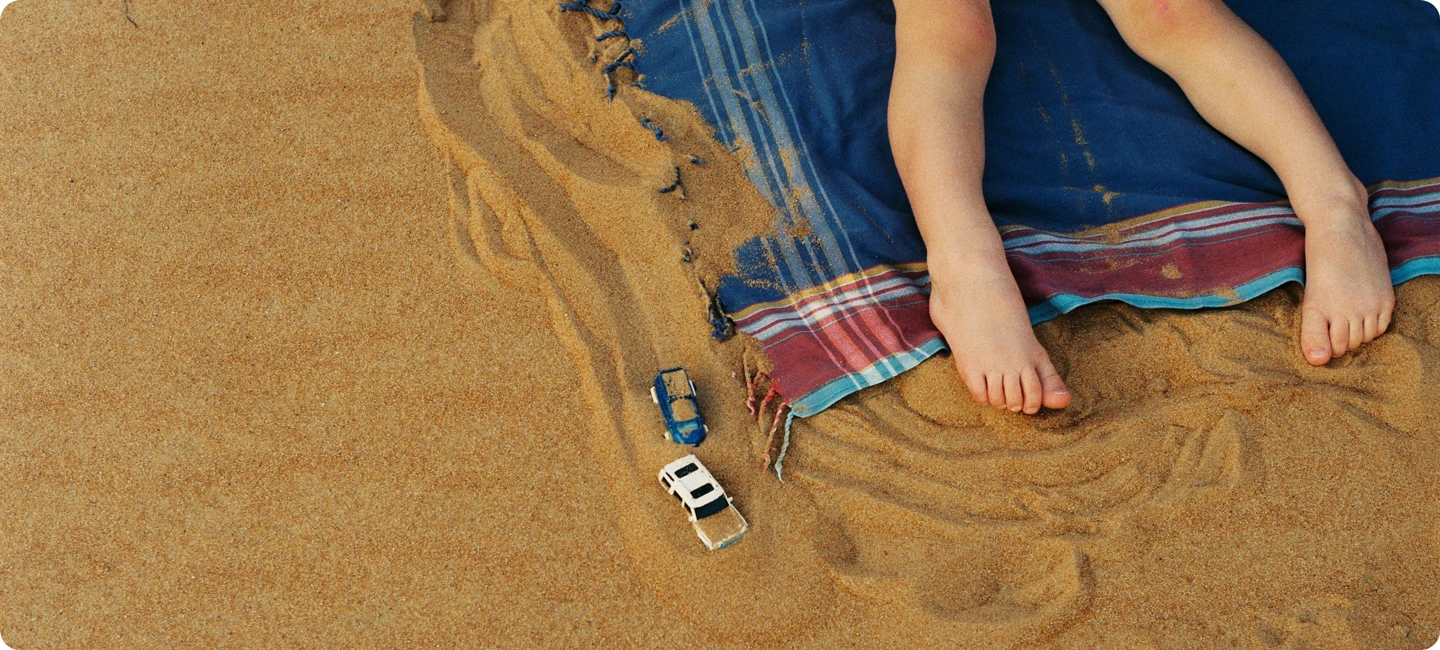
Each of our trips is entirely tailor-made with originality, quality and cultural immersion in mind. Our team of destination specialists will craft itineraries based on your tastes, using their first-hand knowledge and the help of our in-country team of Concierges and guides. All trips are accompanied by a wide range of additional services, including a 24-hour helpline, the Original Travel app, fast-track airport services and much more.
ENQUIRE NOW
Our team of destination experts will get to know you and your unique requirements for your holiday

We work with you to build an ultra-personalised holiday itinerary with your choice of accommodation, experiences and activities

All of our holidays include little extras designed to make a big difference to your trip, from fast-tracking you through airport check-in and security to our network of local Concierges